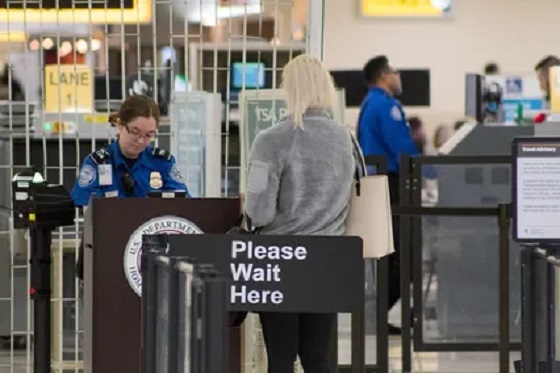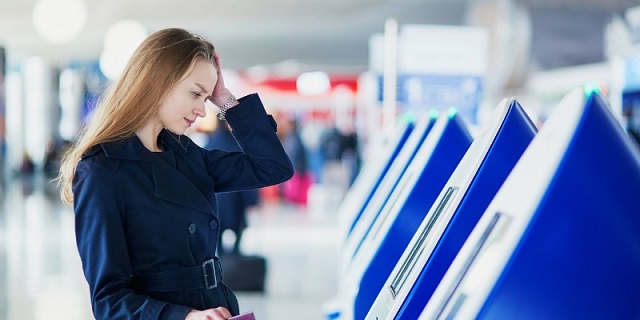Travel
Todayville Travel goes on a Yukon road trip Part 2 – Dawson City and the Dempster Highway

2nd in a 3-part series on a Yukon road trip – Dawson City and the Dempster Highway
Upon our return from six weeks exploring Canada’s north, friends enquired, “So what was your favourite place?” And each time, gazing distantly while recalling the amazing scenery, people and places we encountered, I answered: “Haven’t a clue.”
But Dawson City, Yukon is a good start.
I love Dawson. Unlike cruise-ship destinations on the nearby Alaska coast, Dawson is genuinely quaint. Colorful clapboard buildings line the streets, interspersed with heritage houses leaning drunkenly on a permafrost foundation.

Diamond Tooth Gertie’s is Dawson’s historic casino and dance hall. This landmark saloon was established over a century ago and, while Gertie herself is getting a little long in the tooth, the can-can girls are still high-kicking a vaudeville act each evening at 8:30pm, 10:30pm and midnight. Happy hour at Gertie’s is from midnight to 1am. The manager at our RV park – located a short walk from Gertie’s – winked when she said “the later the show the more the skin.” I suggested to my wife Florence – purely for journalistic purposes – that we take in the evening’s final performance.

“…Their public throes of ecstasy are disconcerting. And should a birder confirm the presence of an olive-sided flycatcher by its loud and clear “quick-three-beers” call – well, just stay out of the way...”
Our June arrival coincided with the midnight sun’s long summer appearance. It may seem frivolous to remark that it doesn’t get dark here in summer, but until you’ve actually experienced this phenomenon, it is hard to appreciate. Darkness never descends; not tonight nor the next nor the night after that. Daylight is a 24/7 thing for six weeks.

There is no respite from the light. One’s natural daily rhythm quickly shuts down, confused, as if dragged through perpetual jet lag. Soon you are eating dinner at 11:45pm, hanging out on the dusky streets ‘til all hours and sleeping past noon; 4am is just an overcast day, juxtaposed with the usual night sounds of street-laughter and squealing car tires. Birds sing non-stop. One night, in this altered circadian state, I found myself and my ukulele busking for cash at 3am outside the venerable Westminster Hotel with a couple of young Quebecois. And we didn’t do badly – after two hours I’d donated only thirty bucks.

Summer here is difficult to digest, but a season of endless darkness would be interminable, unimaginable. Only after a full winter hunkered down in the snow and ice of Yukon can one proclaim himself a genuine “sourdough”. A somewhat easier feat is attaining “sour toe” certification, awarded to all those who slurp up a $5 shot of Yukon Jack whiskey containing a pickled human toe – which your lips must touch. (I am now a proud member of the Sour Toe Club. Fortunately I was nearly as pickled as the toe when the deed was consummated.)

Although the Klondike gold rush ended more than a century ago, Dawson retains its frontier spirit. The streets are full of entrepreneurs and oddballs. Young drifters seek adventure, mingling with cagy old-timers. Secretive men and women still comb nearby creeks, moiling for gold. Astute shopkeepers mine tourist’s pockets. Individuals all, Dawson folk march to the beat of no one’s drum but their own.

Every person I’ve met who’s been to Yukon (don’t say the Yukon, that’s a dead giveaway you are a newcomer, a Cheechako, from the “outside”) returns home gushing about the Klondike story, an epic period in Canadian history. I too am now a convert.
On our last night in town, just shy of midnight, we drove to an overlook offering a panoramic view of Dawson far below. We chatted with a lovely young aboriginal woman picking wild herbs from the steep cliff-face. “I make tea with spruce tips, labrador, cranberry bush leaves… and sage,” she said, reaching for a sprig over the precarious edge. “The caribou pass through here in October. They love sage. Come look.”

The caribou may not suffer from vertigo but I wasn’t going near that precipice. Nearby another woman watched, quietly slurping beer – the same precocious gal who had inducted me into the Sour Toe hall of fame the night before. Dawson is not a big place.
Properly schooled in the art of brewing tea from local ingredients, we departed for a late night game of golf. We arrived at the Top of the World golf course after midnight, so I thought it fitting to ask the proprietress for the twilight rate. She looked at me blankly, shielding her gaze from the sun’s glare.

I decided not to quibble over the green fees, paid the full fare of $24, and off we teed into the grassy tundra. On the sixth hole sunset and sunrise collided, shared only by our twosome – and competing packs of wolves baying at the spectacle.
In the morning, seeking even more vitamin D, we headed further into the perpetual sunlight, north up the Dempster Highway toward Inuvik and the Arctic Ocean. Our tour up this narrow gravel road began with a stop at Tombstone Territorial Park where we chanced upon a weekend gathering of birders. Have you ever met a birder? At the risk of mixing metaphors I must say these odd ducks are strange cats. They make Trekkies look undedicated. Anyone who gets up early to tromp through muskeg in search of a lesser scaup or hooded merganser needs to have their head examined.
It is uncomfortable watching a birder identify the elusive Ruddy Duck. Their public throes of ecstasy are disconcerting. And should a birder confirm the presence of an olive-sided flycatcher by its loud and clear “quick-three-beers” call – well, just stay out of the way. But this obsession with things winged is surprisingly contagious. We attended an evening lecture at the Tombstone amphitheater where a bright young woman spoke on, “Why Birds Sing.” It’s about sex and war. Male birds make song to attract mates and to fend off territorial rivals; no need for physical confrontation. Have the birdbrains out-evolved man? Could we send our best tenors out to resolve border disputes? Think of the savings on anti-personnel weaponry.
After two days with our feathered friends we elected to fly the coop and continue our slow, muddy journey up the Dempster.

Our goal was the Arctic Circle but the owner of Eagle Plains Motel (the only accommodation and gas stop for hundreds of kilometers in either direction) told us that we should carry on a little further, over the Yukon border and into the Northwest Territories to see real tundra landscape. So we did. But the weather was miserable, the visibility poor and the shoulderless road hazardous. Our plan to bicycle across the Arctic Circle line was cancelled. Our bikes, hanging off the back of the van, looked like they’d been dipped in chocolate.
We retraced our path in search of the nearest wand wash. Back in Dawson and $23 in loonies later the RV began to reappear from its dark, molten lacquer.

There are different ways to experience our great north. You can read Pierre Berton novels which, while informative, are also useful as a sleep-aid – or you can go explore an abandoned Yukon River dredge yourself. And bring a pan – there’s still plenty of gold in them thar hills.
Next time: Kluane National Park, Yukon
Gerry Feehan QC is an award-winning travel writer and photographer. He and his wife Florence live in Red Deer, AB and Kimberley, BC.
.

Click below to read Part 1 in Gerry’s 3-part series on the Yukon.

Thanks to these amazing local companies who make Todayville Travel possible.


Click here to visit our Travel section and see more of Gerry’s stories.
International
No more shoes off: Trump ends TSA’s decades-old rule

 MxM News
MxM News
Quick Hit:
The Trump administration is phasing out one of the most despised airport security policies in America: the requirement to remove shoes during TSA screening.
Key Details:
- Passengers will no longer be required to remove their shoes at airport security checkpoints in coming weeks.
- The change is rolling out at Baltimore, Fort Lauderdale, Cincinnati, Portland, Philadelphia, and Piedmont Triad airports.
- White House Press Secretary Karoline Leavitt confirmed the policy reversal on Tuesday morning.
Diving Deeper:
The Trump administration announced it is ending the much-loathed Transportation Security Administration rule requiring passengers to remove their shoes during security checks, a mandate that has frustrated Americans since its introduction nearly two decades ago.
The change is being implemented first at Baltimore/Washington International Airport, Fort Lauderdale International Airport, Cincinnati/Northern Kentucky International Airport, Portland International Airport, Philadelphia International Airport, and Piedmont Triad International Airport in North Carolina, according to CBS News. The policy will expand to additional airports nationwide in the coming weeks.
White House Press Secretary Karoline Leavitt shared the news on X, posting, “Big news from [the Department of Homeland Security]!” Tuesday morning. A TSA spokesman told The New York Times that “TSA and DHS are always exploring new and innovative ways to enhance the passenger experience and our strong security posture,” suggesting the policy change is part of broader improvements under President Trump’s leadership.
The policy to remove shoes was first instituted in 2006, stemming from the December 2001 attempt by Richard Reid, known as the “shoe bomber,” to ignite explosives hidden in his shoes on a flight from Paris to Miami. Reid was sentenced to life in prison after pleading guilty to terrorism charges, but critics have argued the policy punishes every American traveler for the actions of one terrorist nearly 25 years ago.
Before the update, travelers in the TSA PreCheck program were already exempt from removing shoes, belts, and jackets. Now, under President Trump’s directive to reduce pointless regulatory burdens, the policy is being eliminated for all travelers.
Business
Here’s why your plane ticket is so expensive

From the Fraser Institute
By Alex Whalen and Jake Fuss
While the strike by WestJet mechanics lasted only a few days, many Canadian air travellers faced long delays and cancelled flights. More broadly, according to the Canadian Transportation Agency, customer complaints have hit an all-time high.
Yet many dissatisfied travellers likely don’t realize that Ottawa heavily contributes to their frustrations. Let’s look at the various ways federal policies and laws make air travel worse in Canada.
First, federal laws insulate Canada’s airlines from competition. Foreign airlines are subject to highly restrictive “cabotage” laws which, for example, dictate that foreign airlines cannot operate routes between Canadian cities. At the same time, foreign investors are forbidden from owning more than 49 per cent of Canadian airlines. By restricting international participation in the Canadian air travel market, these laws both deprive Canadian consumers of choice and insulate incumbent airlines from competition. When consumers have more choice, incumbents have a greater incentive to improve performance to keep pace with their competitors.
Second, a wide array of taxes and fees heavily influence the cost of airline tickets in Canada. Airport improvement fees, for example, average $32.20 per departing passenger at airports in Canada’s 10 largest markets. In contrast, airport improvement fees in the United States cannot exceed $4.50. And last year the Trudeau government increased the “air travellers security charge” by 32.85 per cent—this fee, which now ranges from $9.94 to $34.82 per flight, is higher in Canada than the U.S. across all flight categories. On the tax front, in addition to fuel taxes including the federal carbon tax, the federal excise tax on unleaded aviation gasoline in Canada is 10 cents per litre compared to 6.9 cents per litre in the U.S. And the U.S., unlike Canada, does not apply sales taxes to aviation fuel.
Third, air travel is a heavily regulated sector. Federal legislation generates thousands of provisions airlines must follow to operate legally in Canada. Of course, some regulation is necessary to ensure passenger safety, but each regulation adds administrative and compliance costs, which ultimately affect ticket prices. To lower the cost of air travel, the federal government should reduce the regulatory burden while maintaining safety standards.
Lastly, the ownership model of Canada’s airports results in a yearly transfer of rent to the federal government. The federal government used to own Canada’s national system of airports until they were transferred to private not-for-profit corporations in the early 1990s. However, these airports must still pay rent to the federal government—nearly half a billion dollars annually, according to the Canada Airports Council. As with the other examples listed above, these costs are ultimately passed on to consumers in the form of higher ticket prices.
While a precise estimate is difficult to obtain, various government policies, taxes and fees comprise a large share of the cost of each airline ticket sold in Canada. With complaints from travellers at all-time highs, the federal government should reduce the regulatory burden, increase competition, and lower fees and taxes. Policy reform for air travel in Canada is long overdue.
Authors:
-

 Business1 day ago
Business1 day agoMark Carney’s Fiscal Fantasy Will Bankrupt Canada
-

 Opinion1 day ago
Opinion1 day agoCharity Campaigns vs. Charity Donations
-

 Alberta1 day ago
Alberta1 day agoTemporary Alberta grid limit unlikely to dampen data centre investment, analyst says
-

 Daily Caller22 hours ago
Daily Caller22 hours ago‘Strange Confluence Of Variables’: Mike Benz Wants Transparency Task Force To Investigate What Happened in Butler, PA
-

 Frontier Centre for Public Policy2 days ago
Frontier Centre for Public Policy2 days agoCanada’s New Border Bill Spies On You, Not The Bad Guys
-

 Uncategorized2 days ago
Uncategorized2 days agoCNN’s Shock Climate Polling Data Reinforces Trump’s Energy Agenda
-

 Opinion1 day ago
Opinion1 day agoPreston Manning: Three Wise Men from the East, Again
-

 Business1 day ago
Business1 day agoCarney Liberals quietly award Pfizer, Moderna nearly $400 million for new COVID shot contracts




